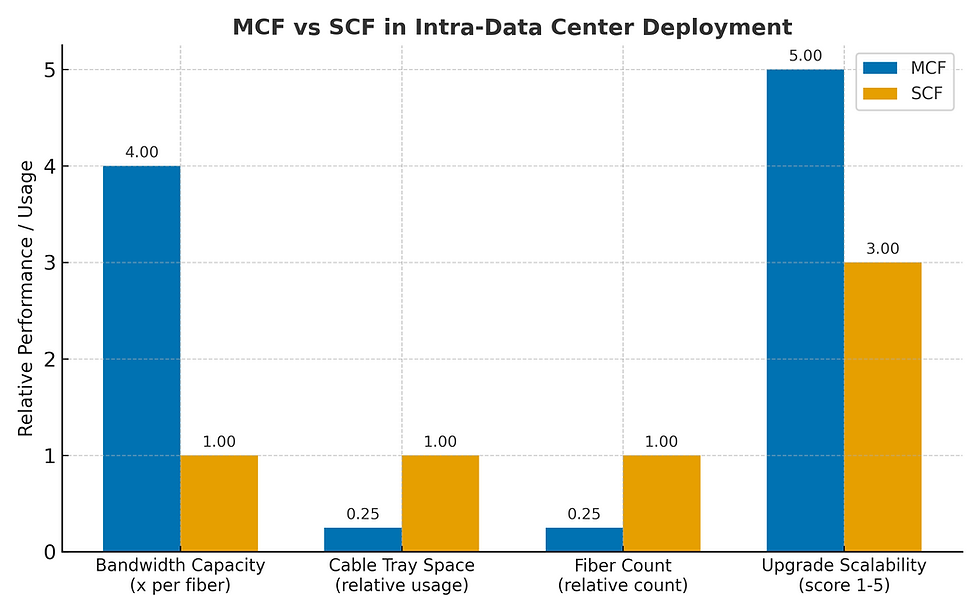AI Demand Accelerates Ultra-High Fiber Count (UHFC) Cable Adoption in Data Center White Space
- Nguyen Tran Tien
- Oct 2
- 1 min read
As AI data centers scale rapidly, fiber infrastructure inside the white space must keep pace. Traditional cabling systems — such as MPO trunks or standard high-fiber patch cords — can no longer meet the density and performance demands, with AI racks now requiring well over 1,000 fibers each.

Ultra-High Fiber Count (UHFC) cables — typically 576 fibers and above — are emerging as the solution. Advanced designs like Spider Web Ribbon (SWR) maximize fiber density while minimizing microbending loss, allowing greater flexibility in routing and installation. Supporting hardware — from switches to splice enclosures — must also evolve to handle tens of thousands of fibers, with some racks exceeding 40,000 terminations.
Despite challenges in manufacturing and deployment, such as bend performance and signal loss management, UHFC technology has matured significantly. Together with compatible connectivity and management systems, UHFC cables are becoming the backbone of AI-driven white space networks, enabling the scale and throughput modern workloads demand.
Looking ahead, Multi-Core Fiber (MCF) technology represents a powerful leap for UHFC. By embedding multiple cores into a single fiber strand, MCF could multiply fiber density per sheath without proportionally increasing cable bulk. This approach not only pushes UHFC to new limits, but also simplifies routing, improves space efficiency, and unlocks novel architectures for AI-driven data centers.
While manufacturing, handling, and testing UHFC cables remain complex, solutions are maturing quickly. With complementary advances like MCF, UHFC will continue to evolve as the foundation of next-generation hyperscale and AI data center connectivity.



Comments